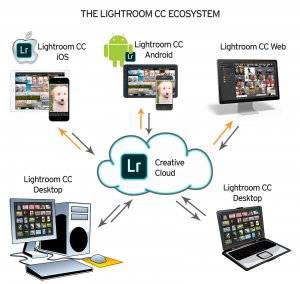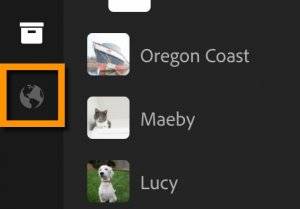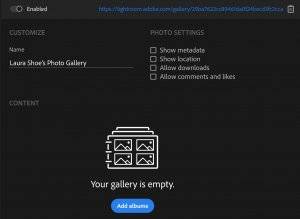Today at its MAX conference Adobe announced the immediate availability of updates to Lightroom CC (mobile) for iOS and Android, and to Lightroom CC Web. Lightroom mobile and web are now being positioned as fully integrated components of the “Lightroom CC Ecosystem”, consisting of the new cloud-based Lightroom CC desktop application, Lightroom CC iOS, Lightroom CC Android, and Lightroom CC Web (at lightroom.adobe.com):

With Lightroom CC, you’ll automatically have all your photos with you everywhere you go and the work you do on them will seamlessly show up everywhere else.
There is and will be only limited integration between Lightroom CC iOS and Android with Lightroom Classic, which is the new name for the Lightroom program we have been using for years and that is now on version 7. Current functionality that syncs smart previews and editing from Lightroom Classic to iOS and Android, and full size files and editing from iOS, Android and Web to Lightroom Classic desktop will remain – but that’s it for Adobe’s investment in syncing to and from Lightroom Classic – as Adobe adds new features to the Lightroom CC ecosystem, they will not sync to Lightroom Classic. Adobe frames their decision as one of supporting Lightroom Classic as a desktop-centric solution, and Lightroom CC as a cloud-centric solution. You’ll see the implications of this illustrated below with keywords and folders.
What’s New in Lightroom CC iOS Version 3.0
The iOS Lightroom mobile application we have been using for quite some time on iPads and iPhones will now be known as Lightroom CC iOS. Adobe released version 3.0 today. In addition to miscellaneous design tweaks, navigation improvements and bug fixes, the following have been added:
iPad Only:
What’s New in Lightroom CC Android 3.1
What’s New in Lightroom CC Web
Related Content
There are many more Lightroom-related announcements today – visit my Lightroom Classic and Lightroom CC resource page for articles and video tutorials covering all of this week’s Lightroom news and releases !






